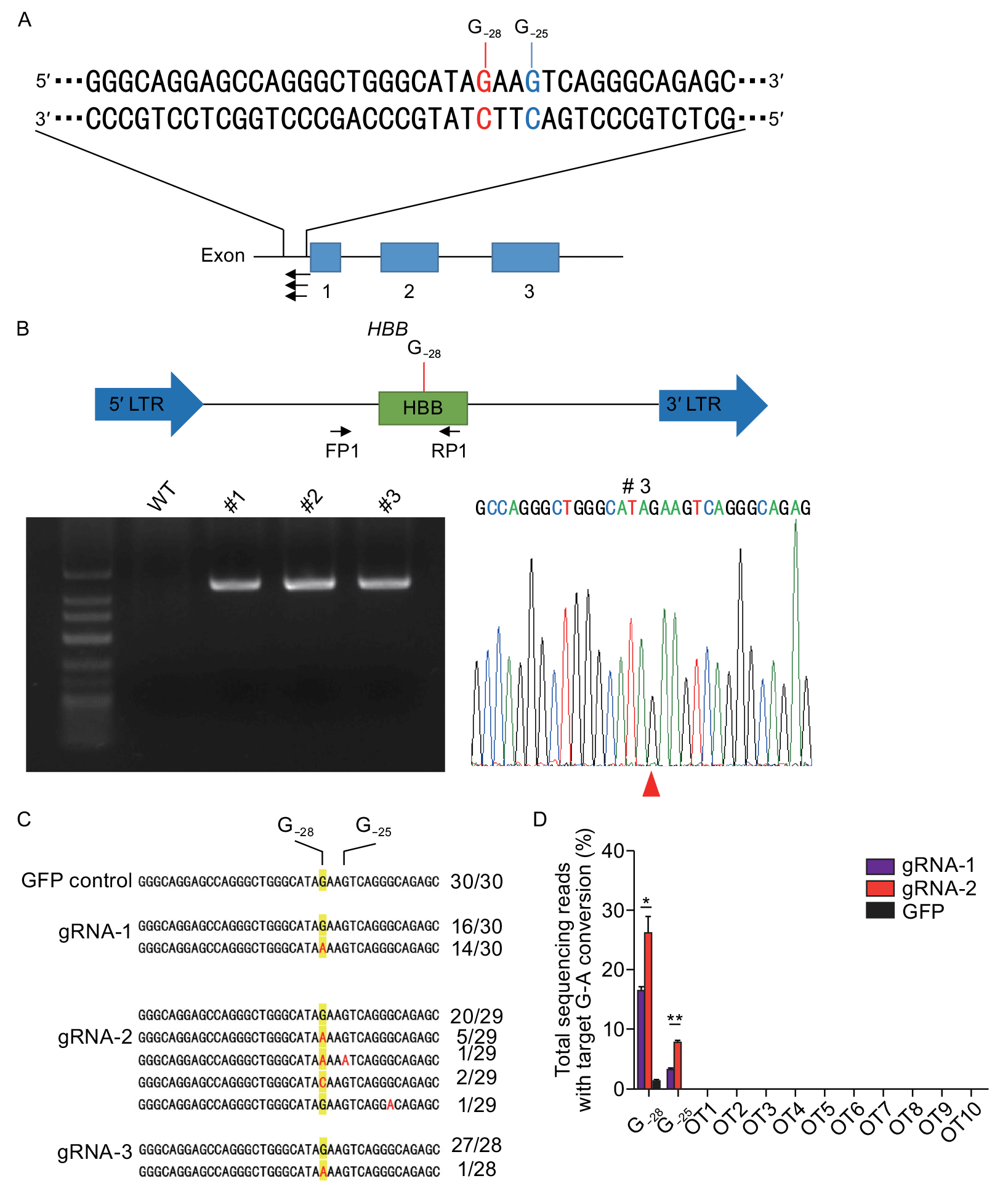Genetic engineers from China eliminate congenital beta-thalassemia disease in a human embryo
 While some Western countries for religious and other reasons prohibit genetic editing of human embryos, China has become one of the world leaders in this scientific direction. The direction is very promising, because after deciphering the human genome, an unprecedented amount of information about point mutations markers became available when the problem is to replace the single base in the DNA chain (the illustration shows the mutated base A> G, which causes beta-thalassemia) .
While some Western countries for religious and other reasons prohibit genetic editing of human embryos, China has become one of the world leaders in this scientific direction. The direction is very promising, because after deciphering the human genome, an unprecedented amount of information about point mutations markers became available when the problem is to replace the single base in the DNA chain (the illustration shows the mutated base A> G, which causes beta-thalassemia) .
If you allow gene editing, then people could easily get rid of many of these dangerous and sometimes deadly diseases. This has now been proven by a group of Chinese geneticists.
Gene editing is the best and sometimes the only way to cure a congenital disease, write the authors of a scientific paper , which was published on September 23, 2017 in the journal Protein & Cell . It not only cures a specific person, but also prevents the transfer of the wrong genes to the next generations.
The authors of the research work are from the main laboratory of genetic engineering of the Ministry of Education, the main laboratory of Biocontrol, the main laboratory of Guangzhou Healthy Aging Research, the main laboratory of reproductive medicine of the Guangzhou Province and the School of Natural Sciences (all from China), and the Department of Biochemistry and Molecular Biology of the Baylor College of Medicine Houston, USA).
Like other research groups, in this case, scientists first tried to apply the well-known CRISPR / Cas9 method in combination with homologous directed repair (HDR) of cells in triple zygotes and diploid zygotes, but this method is still difficult to use in real conditions due to low efficiency and unwanted unexpected homologous recombinations. Therefore, the researchers used an advanced technique that showed high efficiency. They applied the base editor based on the CRISPR / Cas9 system and cytidine deaminase (rAPOBEC1).
It is curious that programmable editing of DNA strands using such an editor was invented in the USA and described in the literature (2016). The editor makes it possible to very accurately and reliably replace single bases of C with T in the macromolecule of DNA, and bases of G with A. But the American researchers could not test their invention on a person, so the Chinese colleagues picked up the banner.
As part of this experiment, genetics have managed to rid the human embryo of a congenital genetic disease, beta-thalassemia is a fairly common genetic disease in the countries of the Mediterranean, the Middle East, India, Central and Southeast Asia. Large beta thalassemia occurs when there are mutations in both alleles of the beta globin gene. In the absence or with a sharp decrease in the production of beta-chains, hemoglobin A is replaced by hemoglobin F. In the absence of treatment, patients with major beta-thalassemia usually do not live up to five years. The only options for them are allogeneic bone marrow transplantation or continuous blood transfusions throughout their lives, but in this case they often suffer from concomitant diseases.
Scientists are well aware that the beta globin gene is located on chromosome 11 in position p15.5, and the disease can be cured by simply correcting the base pairs in this gene at the germ level, which Chinese researchers have done. Since in real conditions it is difficult to find an embryo with such a disease, the scientists made 20 clones from the patient's skin cells. As a result of the experiment, successful replacement of base G to base A in one or two alleles was achieved in 8 of 20 clones. Such effectiveness is not yet sufficient for clinical use, but it exceeds the effectiveness of other methods of gene editing.

Elimination of the A> G mutation by replacing the base G with the base A in the DNA editor
This type of editing is a significant advance over conventional genetic editing, because replacing individual DNA bases is an ultra-precise point editing method. Thanks to this, a group of Chinese geneticists for the first time in the world managed to eliminate a recessive mutation, which is caused by two failed copies of one gene, that is, mutations in both alleles. This is a significant achievement that opens up completely new perspectives for medicine.
The journal Nature writes that scientists from different countries have published eight papers on the genetic editing of human embryos in the scientific press, five of them in the last two months. No one allowed the germ to grow for more than 14 days for ethical reasons.
The scientific article “Correction of β-thalassemia in human embryos” was published on September 23, 2017 in the journal Protein & Cell (doi: 10.1007 / s13238-017-0475-6, pdf ).
All Articles